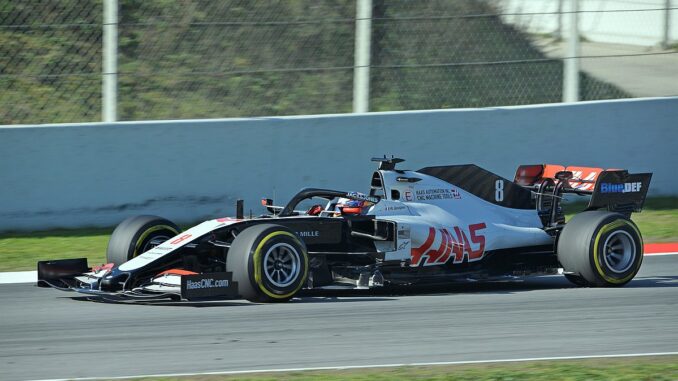
Romain Grosjean was sitting in a flaming car, stuck in between metal barriers with little chance of escaping with his life.
It was lap one of Formula 1’s (F1) Bahrain Grand Prix on Nov. 29. The race just began and all 20 cars were in extremely close proximity, rocketing through the twists and straights of the spotlighted desert circuit. Near the back of the pack, AlphaTauri’s Daniel Kvyat and Haas’ aforementioned French driver were battling it out for track position. Grosjean pulled in front of Kvyat, but his right rear wheel caught the front left of the AlphaTauri, veering the Haas car off course and sending it straight towards a guard rail.
Grosjean’s car rammed nose-first into it at 137 miles per hour at 53 times the force of gravity and exploded in flames. His white, black and red VF-20 split in half, the rear end tossed to the side like a cheap plastic toy while the front half was being licked by colossal flames, all-the-while Grosjean was stuck inside the mutilated cockpit with his vision smothered, the world around him on fire and practically no way of escaping.
He was stuck inside the car like this for 28 seconds. Fire crews rushed over in an attempt to extinguish the massive fireball. The sleek silver Mercedes medical car rushed to the scene as doctors rushed out to try and help. It appeared that all was lost.
Yet somehow, the improbable happened. Grosjean was moving inside of the wreckage, and with the assistance of a fire marshal, climbed out from the car like a phoenix rising from the ashes. He grabbed onto the arm of the awaiting Dr. Ian Roberts, as his race suit was still smoking, and was helped to the medical car. He survived.
“I tried again and I’m stuck,” Grosjean recalled in The Guardian. “So I go back and then there is the less pleasant moment where my body starts to relax. I am at peace with myself and I am going to die. I ask the question: ‘Is it going to burn my shoes or my hand? Is it going to be painful? Where is it going to start?’ To me, that felt like two, three, four seconds. I guess it was milliseconds at the time. Then I think about my kids and they cannot lose their dad today.”
Miraculously, he escaped with only minor burns on his hands. He was in the hospital for just three days before being released.
How did the Frenchman survive? It was the combination of multiple safety features: the nearly-indestructible “survival cell” that surrounded his body, his fire-resistant racing overalls, his Head And Neck Support (HANS) device and most importantly, the car’s halo — the titanium wishbone structure that surrounds the headrest of each F1 chassis can withstand insane amounts of force. Without it, Grosjean’s head would’ve collided with the barrier and most likely resulted in a fatal head injury.
The halo was Grosjean’s angel. It saved his life.
On Monday, it was announced that he would not participate in the season’s finale at Abu Dhabi, concluding his time at Haas and likely, F1 in general. Frankly, who could blame him? He has a wife and three young children, and after suffering an accident as damaging as that, it’d probably be tough to simply hop right back into racing.
Without the advancements in safety and medical technology we have in F1 today, this story could’ve taken an entirely different and much darker route. One that I don’t wish to dwell on.

